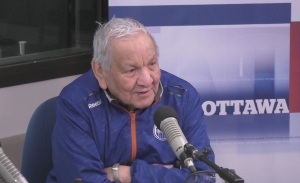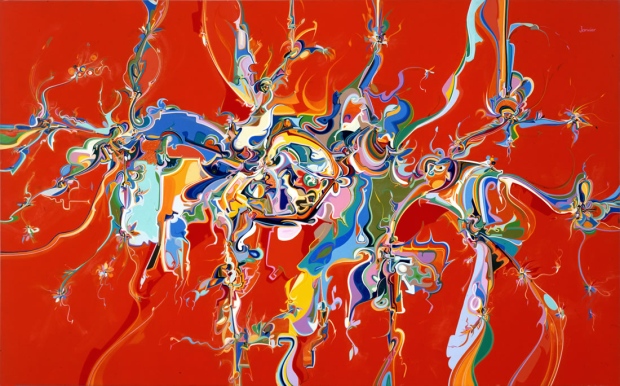 |
Canku Ota
|
 |
|
(Many Paths)
|
||
|
An Online Newsletter
Celebrating Native America
|
||
|
April 2017 - Volume
15 Number 4
|
||
|
|
||
|
Acclaimed Artist
Alex Janvier On How Art Brought Escape At Residential School
|
||
|
byCBC Radio's Ottawa
Morning, CBC News
|
||
|
credits: {credits}
|
|
Janvier exhibit
is on at the National Gallery of Canada until April 17
Residential school is where Alex Janvier was stripped of his culture and language. It's also where he discovered art and a career path that eventually led him to a major exhibition of his life's work at the National Gallery of Canada. The acclaimed artist of Dene and Saulteaux descent was taken from his family at the La Goff Reserve in Alberta when he was eight years old and sent to the Blue Quills Indian Residential School.
"We were just thrown in the back of the truck, and we were taken somewhere. And it was in the fall time. It was getting awfully cold in the back of the truck," Janvier recalled to Ottawa Morning host Hallie Cotnam. Four hours later, he and the other children arrived at the school, and his life would never be the same. 'I was in fear' "I was in fear. I became scared of everything, because I didn't understand what was happening to me. They stripped you completely, threw you in a public shower, and they cut your hair bald," he said. "Even some of us had real braids from childhood. That was stripped right off, cut right off. There was a lot of gnashing of teeth and crying." While he was disconnected from the Dene language he grew up speaking, he found a new way to express himself while at residential school — by creating art.
"I found a certain time of the week, you could escape from the whole outlay of controls. And for about three hours, you're in your own world, and that's when I began to discover my ability to work on paper and beautiful colours — all kinds of colours," he said. Janvier used pencils and water colours to bring life to his residential school surroundings, which he describes as "grey." "It was a form of escapism from the regular routine — the dry routine," he said. International acclaim He continued to develop a colourful style of unique compositions, and quickly turned heads in the art world as a young man. He became one of the first Indigenous students to obtain a degree from an art college when he graduated from the Southern Alberta Institute of Technology and Art in 1960.
In 1973, he helped found the collective that came to be known as the Indian Group of Seven, which included other internationally renowned Indigenous artists like Daphne Odjig, Norval Morrisseau, and Jackson Beardy. The National Gallery of Canada is currently showing a major career retrospective of Janvier's work. He was at the gallery on the weekend for a live demonstration of his creative process. He's appreciated the feedback he's been getting about his work at the gallery, which includes notes left behind by visitors. "Some of it is really touching, because the residential school left me pretty raw in feeling. I was just a kid robbed of everything — my culture, my language, my connection to the elders who were really my significant teachers when I was younger," he said.
|
||||||||||
|
|
|
|
||
|
|
||
| Canku Ota is a free Newsletter celebrating Native America, its traditions and accomplishments . We do not provide subscriber or visitor names to anyone. Some articles presented in Canku Ota may contain copyright material. We have received appropriate permissions for republishing any articles. Material appearing here is distributed without profit or monetary gain to those who have expressed an interest. This is in accordance with Title 17 U.S.C. Section 107. | ||
|
Canku Ota is a copyright ©
2000 - 2017 of Vicki Williams Barry and Paul Barry.
|
||
 |
 |
|
|
The "Canku
Ota - A Newsletter Celebrating Native America" web site and
its design is the
|
||
|
Copyright ©
1999 - 2017 of Paul C. Barry.
|
||
|
All Rights Reserved.
|
||

